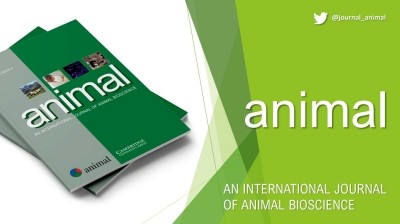US feed, ag public research could benefit from change in funding method

There is interest in the public funding of agriculture and feed research in the US, said Carl Zulauf, professor emeritus in the department of agricultural, environmental and development economics at the Ohio State University.
However, the amount spent has been declining since about 2005, he said in a recently published assessment. Instead funding has been focused on addressing immediate needs.
“What we’re seeing is a decline in real and actual dollars committed to agricultural research,” he told FeedNavigator. “There are few people who are against funding of public research, but when time comes to make decisions it tends to rarely come to the top of priorities.”
“We’ve had lots of discussions in the past about research and new initiatives and none of them have changed the long-run trajectory,” he said. The goal of proposed funding mechanism would be to change that, he added.
For feed producers and users, the decline in public funding could mean less support for foundational work that explores ways to improve production of feed crops or the understanding of how animals process what they eat, said Zulauf.
The type of work often supported through public funding is generally what comes before investment from private companies, he said. “They don’t tend to invest in the foundational research for stuff that you’re going to need in 20-30 years,” he added.
Changing funding allocation
However, there may be a way to address the research funding decline by linking the public funding used to address immediate needs of producers or farmers with dollars spent on research, said Zulauf.
The decline in public funding in favor of immediate assistance has been demonstrated in some areas covered by the Farm Bill, he said. “You can go to every title and see where they’re going to choose funding for the issue at hand over research that would offer large long-term benefits on the issue,” he added.
He is proposing a different path to designate funding designed to connect to short-term incentives, like immediate assistance, and long-term projects, like research, he said.
“Research funding could be further aligned with the dynamic, evolving nature of farm bill spending choices by designating that a specified share of funds generated by a title must be spent on researching issues associated with the title,” Zulauf said in the assessment. “This new paradigm would replace the current system of a separate research title with funds authorized by individual research program or specified research topic.”
There are still several details to be established because the presented plan is broad by design, he told us. “If would there be support for the broader idea, then there are a lot of questions on how do you operationalize it,” he added.
Basic questions for feed and animal production research
The debate and lack of public funding has implications for the future in several areas of agricultural production, including animal feed and management, said Zulauf.
Topics like understanding the basic chemistry or biological processes involved in producing a feed crop could be one area for focus in publically funded research, he said.
Others might include improving the understanding of how a plant transports energy or reacts to extreme weather, he said. The information generated might answer questions like how to improve run off and reduce waste products or improve yields.
In animal production the focus for public research might be basic animal processes, said Zulauf. “Understanding at the genetic level and macro level, the animal itself – it’s not just about the cellular, it’s how is that reveled in the behavior and performance of the animal?”
Concerns regarding how to measure the comfort of production animals also could fall in this area, he said. “There are a number of things that set out there in terms of the physiology of the animal and how it processes food,” he said.
“Your medical diagnostic, moving that to the individual cow – what is the unique aspects of the cow that includes the rate of gain, milk production, production of progeny,” he said. “Individualization at the animal level is a potential long-run thing that we’re looking to – you already see this in the dairy industry and my guess is we’re going to move to more micro [versions] of that.”
Long-term consequences
The drops in funding for feed and agricultural related issues may not have a great effect in the short term, but is likely to be felt more in future years, said Zulauf. An additional concern is what would happen if research funding isn’t improved.
As less investment is made in agricultural research in the present, it reduces the potential for the US to have improvements in areas like feed crop growth that allow producers to be competitive in the future, he said. “We’ll see the sector shrink over time because it’s not as efficient as other countries,” he added.











